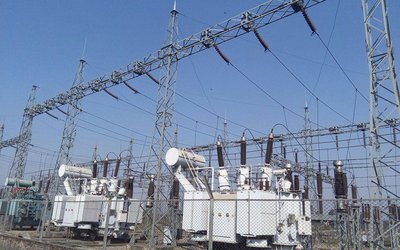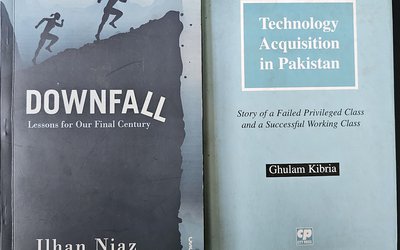The increasing importance of ‘Third Space’ in modern democratic societies cannot be minimized.As we continue through the 21st Century, the principles and systems of civil society, according to some well-known scholars, must move beyond the nation-state to include a global political economy of relations and groups. The emergence of Third Space as a tool to create right environment for multidisciplinary debates amongst official state actors, business leaders and civil society opinion builders, predominantly intellectuals and energetic youth leaders, is certainly complementary to the nation building exercises of any democratic state.
In a post-conflict situation of states in transition, however, there is no clear cut line separating civil society actors (or leaders) with other actors occupying the First Space and the Second Space. This is partly due to overlapping of roles of stakeholders, and mainly because allspaces are diluted by fragile governing structures and political instability. Hence, one important element we may have to keep in mind while exploring the dynamics of ‘Third Space’ in both North East India and the surrounding nations, is the state of functioning political instruments and economic environment.
Nepal, despite being a centuries old independent nation, rich in vast natural and cultural resources, has not been able to harness its potentials during the past seven decadesever since it was opened to the modern world in 1951. In quest of establishing a stable democratic regime that ensures space for economic activities and businesses, leading to prosperity of the people, the country has suffered from repeated political movements and transitions resulting in continued instability, underdevelopment and poverty. Hence, creating a complementary Third Space for voluntarism and a not-for- profit regime of vibrant civil society groups and intellectual creativity, still remains a dream although nearly 50, 000 registered NGOs (some of them vibrants) and equal number of community level civil society groups are operating in one form or the other.
Currently, after several years of democratic struggles, efforts are being made to restructure and institutionalize the changes under a democratic Constitution, framed by an elected Constituent Assembly, as was done by India and many other democratic countries. As a major outcome of the movements, Nepal has now transformed itself from a unitary monarchical system to a Federal Democratic Republic. Whether to continue with thefamiliar parliamentary system of Westminster model with necessary reforms and accommodate diversity under a newly adopted federal structure or go for a Presidential form of government to ensure stability, or for a divided executive under the mixed system of French type, is naturallya difficult choice.
Despite being a big House of 601 with thirty ideologically divided parties, the Constituent Assembly has to take a decision. Moreover, the Constitution must imbibe in it the very basic tenets of constitutionalism and the rule of law in order to create a First Space for effective democratic governance. At present, sinceNepal is governing under an interim legal framework created for post-conflict transition and is in the process of formulating a permanent draft Constitution for the country’speace building, space deficiency for non-profit intervention is obvious. Nevertheless, civil society movement in Nepal continues unabated. Repeated democratic struggles led at times by professional groups and civil society, while political activists and parties were detained, did result into creation of a Third Space during the period of political crises. Although the civil society movements have always helped to bring about big political changes in Nepal, they have however miserably failed to impel politicians manage successes, and institutionalize them. This has repeatedly happened in 1951, 1959, 1989 and 2006.
Nepal can learnt a lot, and has done so in the past, from the experiences of India and the region. How much the federal democratic structure of India has been able to manage the ethnic diversity and able to steer the development vehicles in North East India to conserve its rich cultural and natural heritages, and promote the Third Space for the benefit of the grassroots communities is a question that needs to be answered ?And to whatextend has Third Space been able to play as a vibrant tool in this part of India ? The federal political vehicle that Nepal is trying to introduce, has to play as a right political instrument for harmonizing ‘unity in diversity’ and to empower the common people ? This part of India with a reservoir of immense resource and cultural diversities could be a big political laboratoryof knowledge and comparative experiences for federal governors in Nepal. In addition, the growth of new technologies and advance education systems is another area that India has always set out itself as example of knowledge development bank in the region.
Lastly, it may be essential to take note of and understand some underlying barriers also.Barriers are of different nature, as they are also hurdles. Political/systemic barrier, physical connectivity barrier and security perception (psychological) barrier are three major seen and unseen hurdles on the road to Third Space expansion opportunities in this region. Unless intellectuals and emerging youth leaders of the region work togetherclosely with media and friendlyactors of the First and Second Spaces towards a peaceful, and nonthreatening, common goal, the journeyis still long and the road ahead may not be smooth yet. Thanks to the leadership of Asian Confluence for its noble initiative which is likely to be a crusade to break all thestated barriers in plugging the space deficiencies. Expediting and sharing opportunities and benefits aimed at insuring social and economic justice to the commoners as well, needs to be a common goal in developing societies.This assembly of some of the brightest brains of the region here in this beautiful,culturally rich city of Shillong,is a step that could create a historyto enhance and further consolidate the aura of Third Space not only in this region, but also in other parts of the world.
- Summit For Democracy And Focus On Human Rights
- Jan 22, 2022
- Constitutionality Of Parliament Dissolution
- Jan 12, 2021
- Contempt of Court In Nepal
- Feb 18, 2018
- Constitutional Puzzle
- Dec 22, 2017
- Unique Local Governance Model
- Jul 09, 2017

















